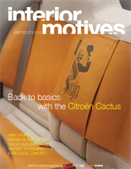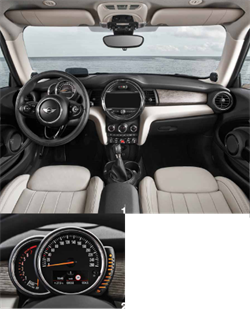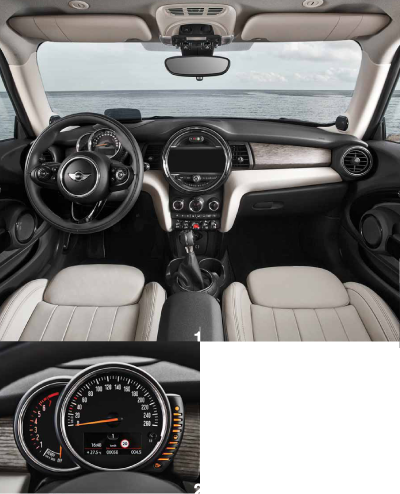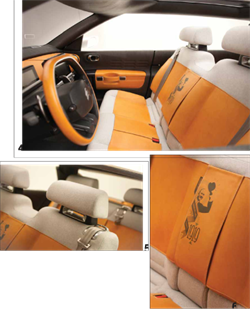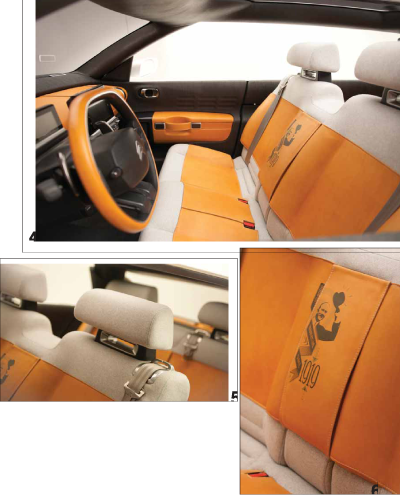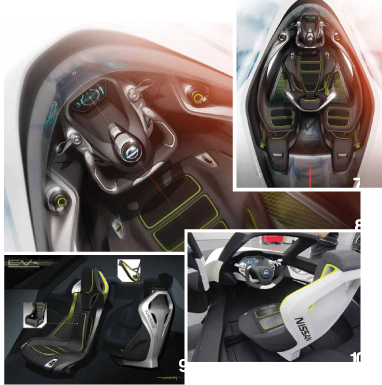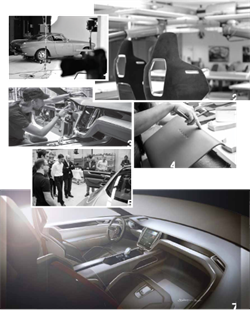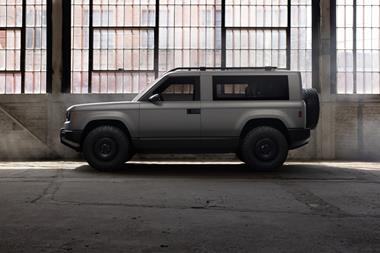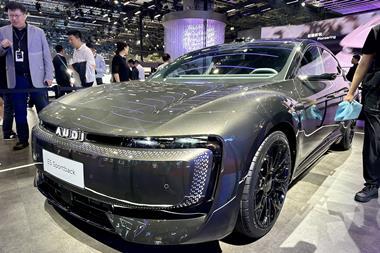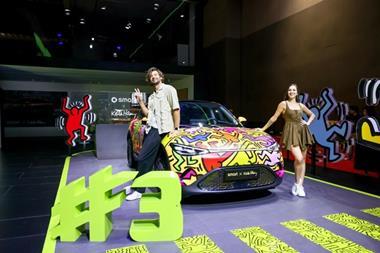IN THIS ISSUE
 Vehicle type Production/Supermini
Vehicle type Production/SuperminiBMW Group design director Adrian van Hooydonk
Head of MINI design Anders Warming
Head of interior design Oliver Sieghart
Interior designers Thomas Wu & Tanja Scholler
Head of C&T design Annette Baumeister
C&T designers Jeanette Ohlhäuser & Wesselka Wandowa
Project started Spring 2009
Project completed Autumn 2012
Launch Oxford/November 2013
The all-new, third-generation MINI range was launched at the company’s factory in Cowley, Oxford on November 18, 2013 – the 107th anniversary of the birth of its original creator Alec Issigonis – before making a tour of the LA and Tokyo motor shows later that week. As before, One, Cooper and Cooper S versions will be available according to market preferences and all are taller, longer and wider than the models they replace. The Mk3 MINI was developed under the direction of head of MINI design Anders Warming and interior design boss Oliver Sieghart - the team behind the acclaimed Rocketman concept of 2011.
Shown here with the Dark Cotton Wood decor, combined with lounge-style seats in piped Satellite Grey leather, is the mid-range Cooper model that makes up the bulk of MINI sales. The angular inner air vents sit flush with the decor strips,“thus we avoided complex edges and details,” says Sieghart. The lower surface of the IP enhances its distinctive wing shape, especially when specified in a contrasting colour. The rear offers more space and has the spirit of a true four-seater. The angle of the 60:40 splitfolding rear backrest can be adjusted now, too.
The steering-column-mounted driver instrument cluster comprises a circular speedometer in the centre and, staggered back a little to the left, a semi-circular revcounter. On the right, red LEDs in the shape of test tubes display the fuel level.
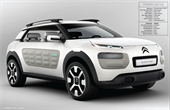 Vehicle type Concept/compact SUV
Vehicle type Concept/compact SUVCitroën design director Alexandre Malval
Project director Mark Lloyd
Interior design manager Andreas Stump
Interior designer Raphael le Masson
Colour & trim designers Vincent Lobry & Estelle Barreau
Project started Dec 2012
Design Frozen Feb 2013
Project completed Jul 2013
Launch Frankfurt/September 2013
The Cactus concept has its roots in the C-Cactus concept of 2007 and is a precursor to a new C-Line range for Citroën that will be launched in 2014. Citroën designers admit that work on the production Cactus had largely been completed when this concept project was started in late 2012, and that its main purpose was to introduce the philosophy and design language to the public at the IAA in Frankfurt, where it made its debut in September 2013.
The Cactus concept has its roots in the C-Cactus concept of 2007 and is a precursor to a new C-Line range for Citroën that will be launched in 2014. Citroën designers admit that work on the production Cactus had largely been completed when this concept project was started in late 2012, and that its main purpose was to introduce the philosophy and design language to the public at the IAA in Frankfurt, where it made its debut in September 2013.A key objective for the Cactus interior design team – led by Andreas Stump – was to deliver a stylish and relaxed atmosphere inspired by contemporary furniture design. Natural materials are used throughout the cabin, including on the steering wheel rim, seats and door handles. “We used a chenille wool microfibre for the lighter areas of the seats and headrests, but a higher value cotton-type fabric for the darker areas of the door panels and on the IP,” reveals colour and trim designer Vincent Lobry.
The middle bolster in the bench-style front seat features a printed motif of founder André Citroën doffing his hat. “We felt he’d be proud of the car: the spirit of inventiveness, the boldness tempered with a touch of humanity,” says Lloyd. “Charm with a human touch to it.”
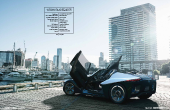 Vehicle type Concept/3-Seat Sports EV
Vehicle type Concept/3-Seat Sports EVSVP & chief creative officer Shiro Nakamura
Exexutive design director Mamoru Aoki
Concept project leader Satoru Tai
Interior designers Takashi Oosuda & Yosuke Takaki
HMI designer Tomohiro Nishikawa
Colour design manager Hideshi Saiki
Project started Summer 2012
Project completed September 2013
Launch Tokyo/November 2013
These later plan-view renderings illustrate the final concept's layout and colour and trim theme:dark grey and black with fluorescent yellow accents. The two-stage display layout remains, with a main screen in the steering hub and another behind it on the slim, boomerang-shaped IP below the windscreen. However, the previously V-shaped steering wheel handles have now morphed into a softer U-shape, the ear-like indicator stalks have become more curvaceous and delicate, and the door-mounted air vents are now circular in design. The seat has also taken on a more complex, geometric form language.
A rendering and photograph of the seat design during the interior buck phase. While keeping the slim, cosseting feel of the previous incarnations, the winged design is now higher and emanates from the seatback’s central spine.
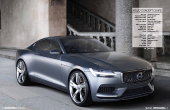 Vehicle type Concept/Four-Seat Coupe
Vehicle type Concept/Four-Seat CoupeVice-president of design Thomas Ingenlath
Director of interior design Robin Page
Interior design manager Jonathan Disleyp
Interior designers Niklas Palm, Daniel Forsgren & Juan Pablo Bernal Pabon
Colour & trim designers Cecilia Stark
Project started August 2012
Design freeze April 2013
Project completed August 2013
Launch Paris/September 2012
Material choice, precision and attention to detail were paramount during the construction of the Concept Coupe, which exceeds typical standards for concept car fit and finish. Context and constant inspiration was provided by the classic 1961 P1800, parked here in the photo studio.
Building and refining the details: a concept review with Thomas Ingenlath, Robin Page and their team; Daniel Forsgren carefully assembling the dashboard; the dressed front seatbacks; and a photo of the luxurious attaché cases being handcrafted at Volvo’s in-house concept build studio. The cases can be securely strapped behind the front seats when the car is moving and are designed to hold items such as a camera and wristwatch; we haven’t seen an attaché case designed to fit a production car since the Alfa 90 in the mid-1980s.
These pre-model sketches give an overview of the final, chosen theme and a lot of the individual interior components.
Magazine
